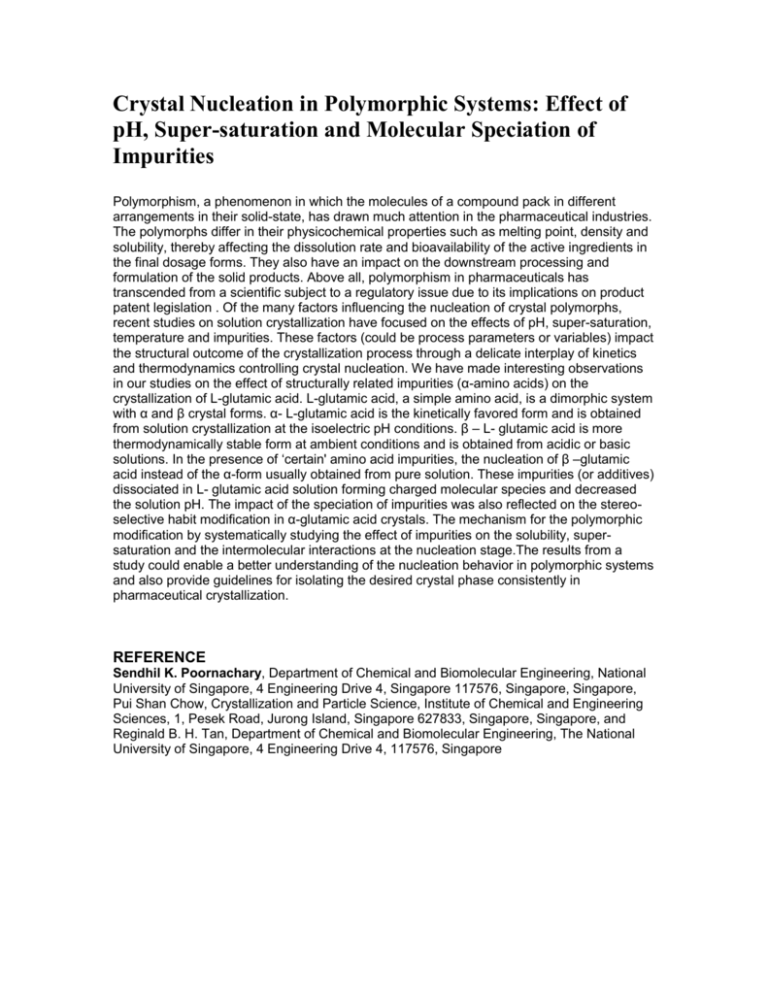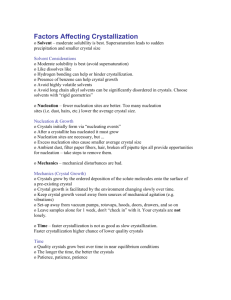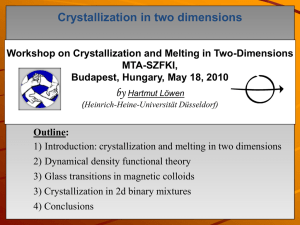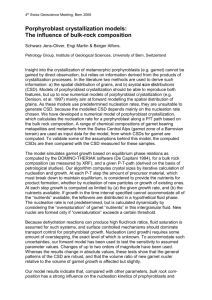Crystal Nucleation in Polymorphic Systems: Effect of
advertisement

Crystal Nucleation in Polymorphic Systems: Effect of pH, Super-saturation and Molecular Speciation of Impurities Polymorphism, a phenomenon in which the molecules of a compound pack in different arrangements in their solid-state, has drawn much attention in the pharmaceutical industries. The polymorphs differ in their physicochemical properties such as melting point, density and solubility, thereby affecting the dissolution rate and bioavailability of the active ingredients in the final dosage forms. They also have an impact on the downstream processing and formulation of the solid products. Above all, polymorphism in pharmaceuticals has transcended from a scientific subject to a regulatory issue due to its implications on product patent legislation . Of the many factors influencing the nucleation of crystal polymorphs, recent studies on solution crystallization have focused on the effects of pH, super-saturation, temperature and impurities. These factors (could be process parameters or variables) impact the structural outcome of the crystallization process through a delicate interplay of kinetics and thermodynamics controlling crystal nucleation. We have made interesting observations in our studies on the effect of structurally related impurities (α-amino acids) on the crystallization of L-glutamic acid. L-glutamic acid, a simple amino acid, is a dimorphic system with α and β crystal forms. α- L-glutamic acid is the kinetically favored form and is obtained from solution crystallization at the isoelectric pH conditions. β – L- glutamic acid is more thermodynamically stable form at ambient conditions and is obtained from acidic or basic solutions. In the presence of ‘certain' amino acid impurities, the nucleation of β –glutamic acid instead of the α-form usually obtained from pure solution. These impurities (or additives) dissociated in L- glutamic acid solution forming charged molecular species and decreased the solution pH. The impact of the speciation of impurities was also reflected on the stereoselective habit modification in α-glutamic acid crystals. The mechanism for the polymorphic modification by systematically studying the effect of impurities on the solubility, supersaturation and the intermolecular interactions at the nucleation stage.The results from a study could enable a better understanding of the nucleation behavior in polymorphic systems and also provide guidelines for isolating the desired crystal phase consistently in pharmaceutical crystallization. REFERENCE Sendhil K. Poornachary, Department of Chemical and Biomolecular Engineering, National University of Singapore, 4 Engineering Drive 4, Singapore 117576, Singapore, Singapore, Pui Shan Chow, Crystallization and Particle Science, Institute of Chemical and Engineering Sciences, 1, Pesek Road, Jurong Island, Singapore 627833, Singapore, Singapore, and Reginald B. H. Tan, Department of Chemical and Biomolecular Engineering, The National University of Singapore, 4 Engineering Drive 4, 117576, Singapore











